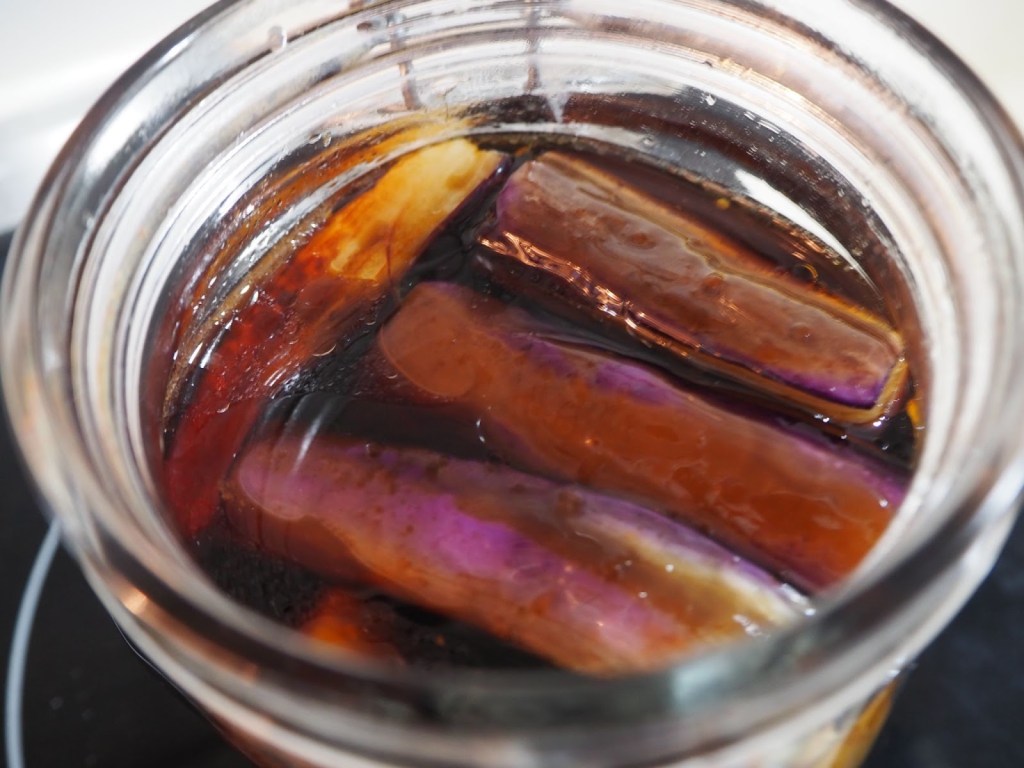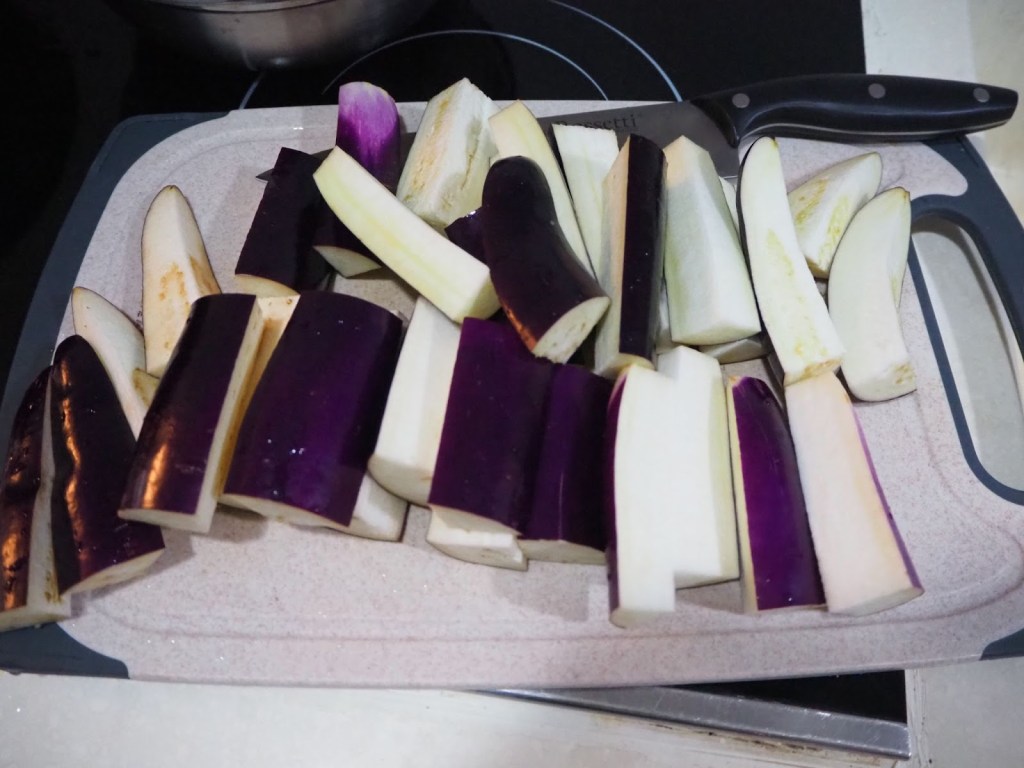A dinner out with my mother opened my eyes to the world of soaking vegetables in dashi, and considerably expanded my side dish game.

Time: 2/5
Is it cheating if I don’t count the passive time?
Effort: 2/5
Knife work, a brief fry and an overnight soak.
Giving eggplant an umami bath
A few years ago, I took my mother out for an omakase experience. For the uninitiated, omakase is a Japanese term that loosely translates to “up to the chef”, and refers to a higher end dining experience where the chef decides the menu to show off the dishes that s/he is the most proud of.
Although the occasion has since been forgotten (it might have been her birthday, I vaguely recall), the array of starters really left a deep impression. My mother and I both being avid cooks, we set about deconstructing each and every dish as we dined. It wasn’t long until we were able to reverse-engineer some of the dishes we had.
My favourite of all the side dishes served that night was eggplant that was first fried, then soaked in a flavourful broth. I later found out that this is a technique called Agebitashi, and that it can be applied to several other vegetables – zucchini and pumpkin come to mind, for example.
Still, eggplant remains my favourite application of this method. The baptism in hot oil gives it a juicy, meaty texture which when permeated with a deeply savoury broth makes it a welcome addition to any meal. It’s especially good when served chilled, releasing refreshing cool bursts of umami from its flesh as you chew.

(Looking for more eggplant dishes for the summer? Check out this grilled eggplant salad by Claudia over at Join Your Life.)
Dramatis Personae
Eggplant
Don’t be afraid to make a big batch. It takes just about as much effort, and you’ll end up with a quick and easy side dish to instantly enhance rice bowls, ramen and salads. I served it with Gyudon, and it made for a wonderful addition to the meal.
Marinade
Dashi is the only non-negotiable element of the sauce. However you still want some soy sauce for colour and salinity, and some sugar for sweetness. I have this bottle of pre-mixed concentrated dashi and soy sauce which is absolutely crutch whenever I cook Japanese. I’m using that for the Gyudon so I might as well use it here too.
Executive summary
- Combine dashi, soy sauce and sugar in a pot and boil until sugar is dissolved. Dilute the marinade with water to taste.
- Cut eggplants into shapes as desired.
- Fry eggplants in oil until lightly browned.
- Soak the eggplants overnight in the marinade.
- Serve chilled.
Play by Play


Take some eggplants, wash them and cut into desired shape. I like batons, but you can make whatever shape you like. Remember that they will shrink during cooking.

Fry the eggplant pieces in oil until lightly browned. Even though it’s a Japanese recipe, this kind of no-batter deep-fry reminds me of the Cantonese technique of passing through oil. It’s important to be quite generous with the oil, because the oil helps with thermal conductivity and even browning. Otherwise, the eggplant tends to get burnt in certain spots while remaining undercooked in others.

Put the eggplants into a container of choice and cover with the marinade. I have this huge glass jar that I usually use for kimchi, which serves well. Let it sit in the fridge overnight so the marinade can permeate the vegetables. I have kept them in the fridge for up to a week without issue.

Serve with some of the sauce. A garnish of green onions add a welcome pop of colour, as well as aroma and crunch. While you’re here, check out the Gyudon I served this with!
Thanks for subscribing! See you around.
Keep browsing by categories, or by tags:
Beef Blog Broccoli Cabbage Carrots Cast iron Cheese Chicken Curry Dashi Date Night Dried scallops Dried shrimp Eggs Fish and seafood Garlic Ginger Glass noodles Gochujang Honey Miso Napa cabbage Onion Oven Pasta Pork Potatoes Salmon Sesame oil Shiitake mushrooms Shrimp Soup Sous Vide Steaming Stewing Stir fry String beans Sweet potatoes Teriyaki Tofu Tomatoes Vacuum cooker Vegetarian Yogurt Zucchini
